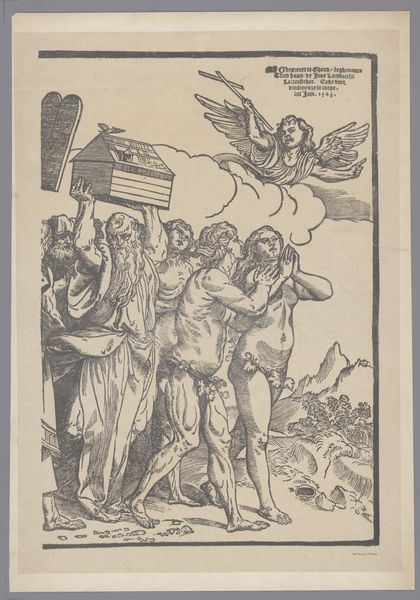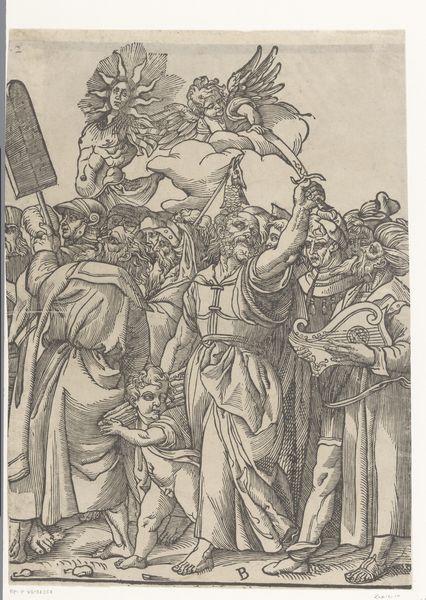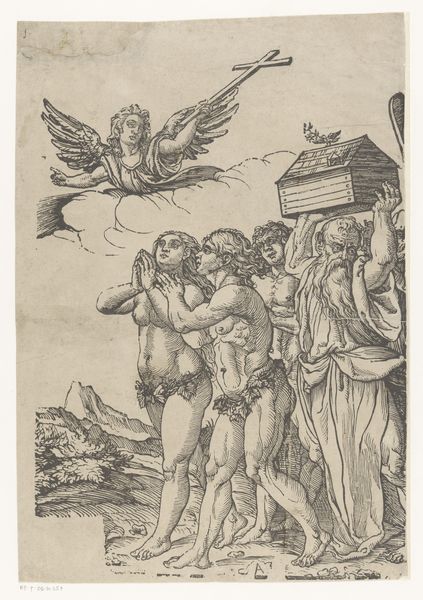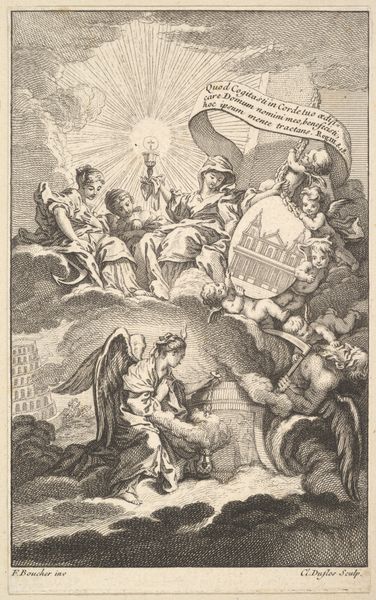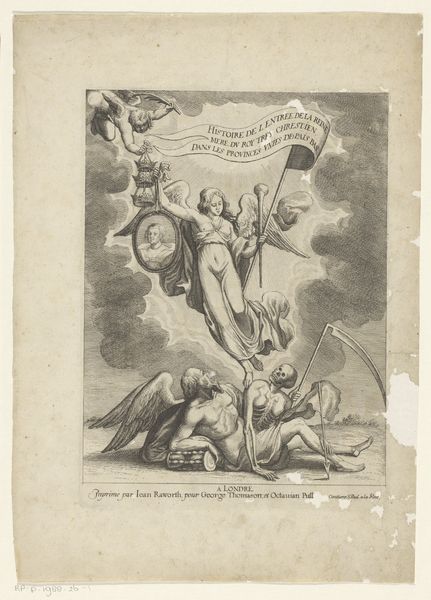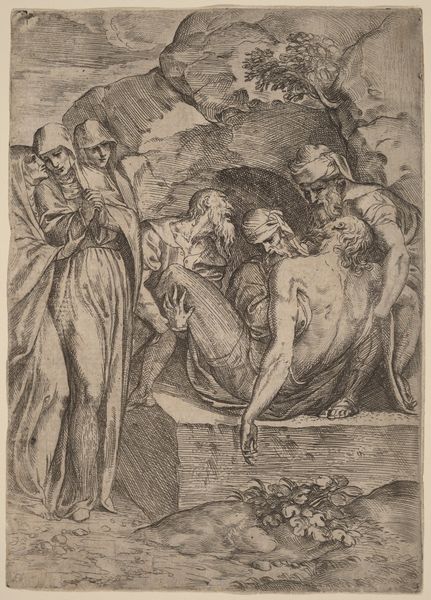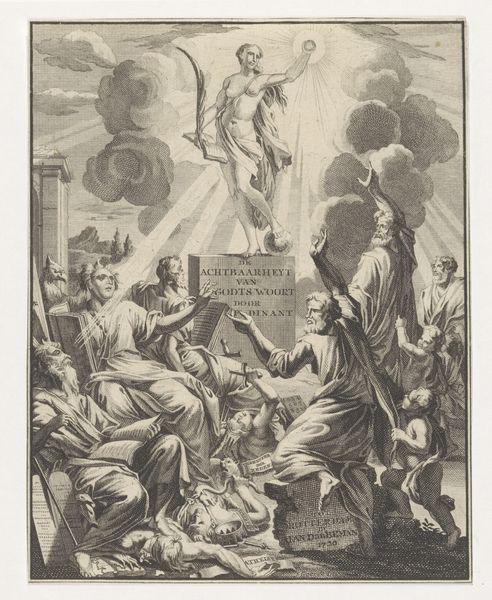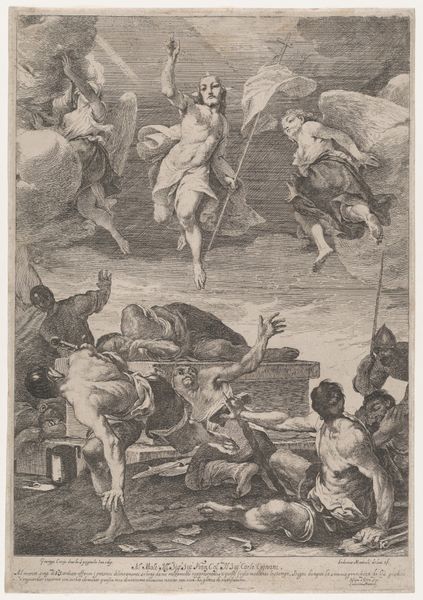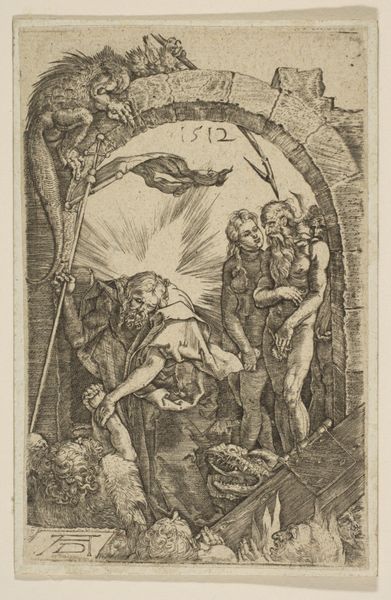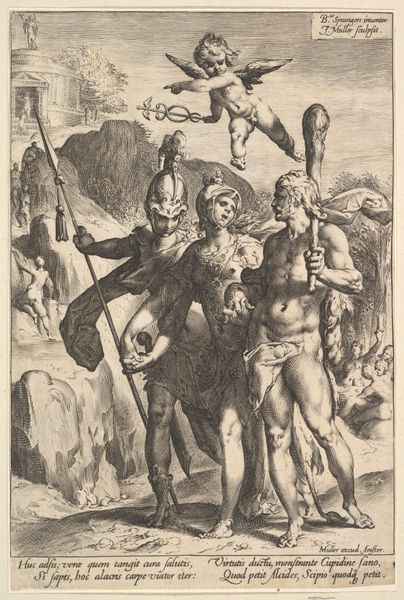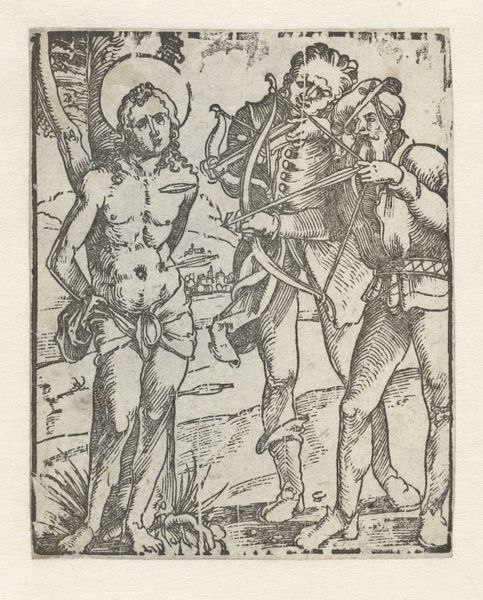
The Triumph of Christ: the last sheet on the right showing Adam and Eve who lead the procession 1505 - 1515
0:00
0:00
drawing, print, woodcut, engraving
#
drawing
#
medieval
#
narrative-art
# print
#
figuration
#
woodcut
#
history-painting
#
northern-renaissance
#
engraving
Dimensions: Sheet: 15 1/4 × 10 9/16 in. (38.8 × 26.8 cm)
Copyright: Public Domain
This is an anonymous woodcut from the 16th century, titled "The Triumph of Christ," and depicts Adam and Eve leading a procession. The image creates meaning through visual codes and cultural references that would have been easily understood at the time. Made in Europe during the Reformation, this print reflects a period of religious and social upheaval. The figures of Adam and Eve, often seen as symbols of sin and the fall of humanity, are placed at the forefront, suggesting a re-evaluation of traditional religious narratives. The inclusion of Noah's Ark and the tablets of the Law implies a connection between the Old and New Testaments, while the angel holding a cross symbolizes Christ's victory over sin and death. Understanding this work requires delving into the religious and political context of 16th-century Europe. Scholars often consult theological texts, political pamphlets, and other visual works from the period to better understand the ways in which artists engaged with the pressing issues of their time. Art's meaning is contingent on its social and institutional context.
Comments
No comments
Be the first to comment and join the conversation on the ultimate creative platform.
